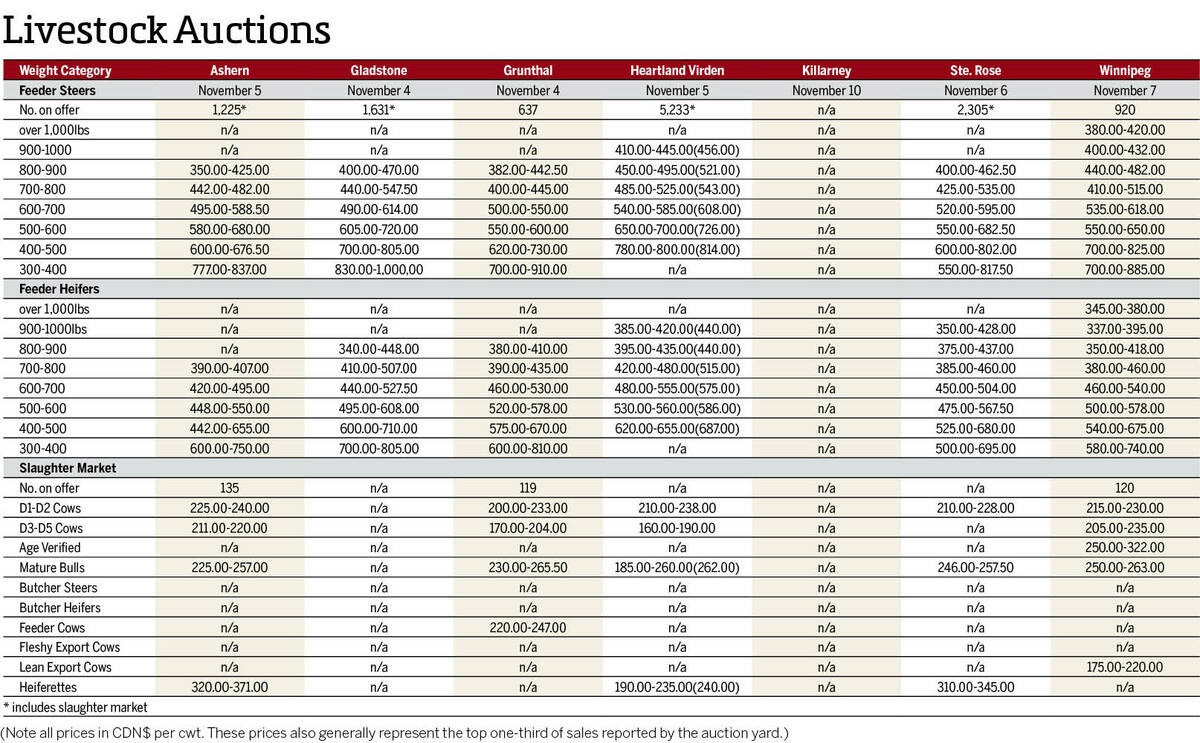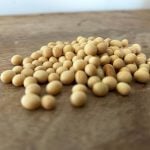Canola prices for the week ended Oct. 26 took a hard hit, with the front contracts falling well below the psychological support level of $700 per tonne.
A big reason for those declines was canola’s faithfulness to the soy complex on the Chicago Board of Trade, and in particular soyoil.
The path taken by the latter is often the trail canola will follow. As the December soyoil contract dropped 1.37 U.S. cents per pound from Oct. 19 to 26, to close at 51.74/lb., November canola lost $25.30 per tonne and $23.10 for the more heavily traded January contract.
Read Also

Manitoba cattle prices – Nov. 10
Cattle prices from Manitoba’s major auction marts for the week of Nov. 4-10.
The soon-to-expire November contract began the week already under $700/tonne, while the January started things off a bit above that mark before smashing its way through. At the final bell on Oct. 26, the November closed at $666.90/tonne and the January dropped to $682.10.
The path laid out by soyoil started with the weather in South America, as farmers in Brazil continued to plant their next bean crop. Divergent conditions, with a wet north and a dry south, created a struggle for growers to seed their crops. But much-needed rain in the south began to save the day, giving hope of another record-breaking harvest.
That pressure was felt in Chicago, as December soyoil started the week at 53.11 U.S. cents/ lb. only to plummet to 51.74, despite a couple of sessions with good increases.
More pressure came from the advancing U.S. soybean harvest, with more than three-quarters of the crop now off the fields. That was well ahead of the five-average of two-thirds being combined by Oct. 22.
However, snow on parts of the U.S. northern Plains plus rain across much of the Midwest and southern Plains somewhat delayed the big push to the finish.
As for canola, the October supply and demand report from Agriculture and Agri-Food Canada had little, if any, effect on the oilseed’s price movements. There were very few changes from the September report, with 2022-23 canola ending stocks holding at 1.51 million tonnes and those for 2023-24 remaining at one million.
With AAFC reliant on Statistics Canada reports, it chose not to tweak this year’s production estimate of 17.37 million tonnes. And there is something of a crux. StatCan’s August and September production reports used a satellite-based model and it’s not until December that the agency turns to its survey-based model. Some in the trade scoff at summertime reports, and perhaps with just cause.
Regardless of province, this year’s harvest was not as bad as anticipated, canola included. Despite dry conditions across much of the region, the oilseed came out better than expected. That said, come early December, the canola production number could increase.
















